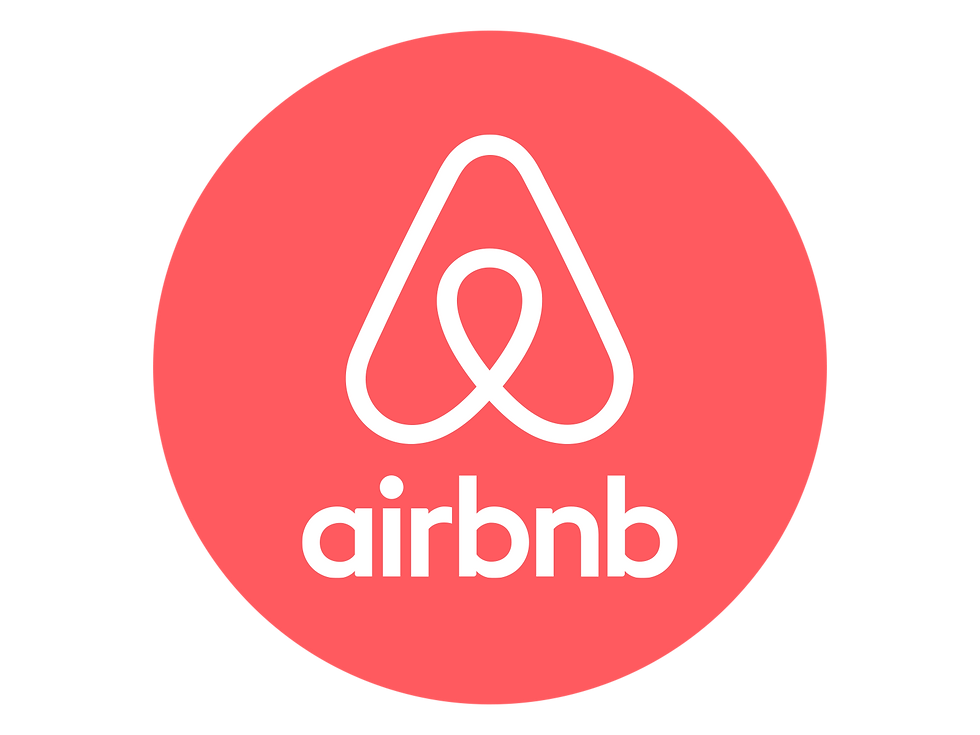In today's competitive market, having a strong and clear brand identity is crucial for any business. Without it, companies can find themselves lost in a sea of similar offerings, struggling to connect with their target audience. A clear brand identity acts as a lighthouse, guiding both the company and its customers through the stormy waters of the market. This blog explores the importance of a clear brand identity, drawing lessons from the real-life example of Airbnb, and provides actionable tips to help businesses create and maintain a strong brand identity.

The Problem: Lack of Clear Brand Identity
Many companies, especially in their early stages, struggle with defining a clear brand identity. They may have a great product or service, but without a strong and consistent brand message, they fail to stand out. A lack of clear brand identity can lead to several problems:
Confusion Among Customers: If your brand message is inconsistent or unclear, potential customers may not understand what your company offers or why they should choose you over competitors.
Lack of Trust: Consistency builds trust. If your branding is all over the place, customers may question your reliability and professionalism.
Missed Opportunities: A strong brand identity can create emotional connections with customers, leading to loyalty and advocacy. Without it, you miss out on these valuable relationships.
Internal Misalignment: Employees need to understand and believe in the brand to effectively communicate it. A lack of clear identity can lead to confusion and disengagement within your team.

Real-Life Example: Airbnb’s Transformation
One of the most compelling examples of a company that successfully addressed its lack of clear brand identity is Airbnb. In its early years, Airbnb struggled with an inconsistent and unclear brand message. The company started as a platform for renting out air mattresses in living rooms, but as it grew, it transitioned into a full-fledged accommodation booking service. Despite its growth, Airbnb's branding was inconsistent, with various logos and an unclear message about what the company stood for.
In 2014, Airbnb decided to undertake a major rebranding effort to clarify its identity. They introduced a new logo called the “Bélo,” which symbolized belonging, and launched the slogan “Belong Anywhere.” This rebranding was not just about a new logo; it was a comprehensive overhaul of their brand identity. They focused on the core idea of belonging and emphasized the unique experience of staying in local homes and being part of local communities.
This rebranding effort helped Airbnb clarify its mission and values, making it clear to customers what they stood for and what unique experiences they offered. The new identity resonated deeply with their audience, helping them stand out in the competitive travel industry. Today, Airbnb is a leading brand in the travel industry, known for its unique and personalized accommodation experiences.
The Metaphor: A Lighthouse in a Storm
To drive this concept home, think of a clear brand identity as a lighthouse in a storm. Just as a lighthouse provides guidance and reassurance to ships navigating through rough seas, a clear brand identity guides and reassures customers in a crowded and competitive market. Without a strong identity, a brand is like a ship lost in the storm, with no clear direction or purpose, making it hard for customers to find and trust it. By establishing a clear brand identity, companies can illuminate their unique value and stand out amidst the chaos, much like a lighthouse standing tall and bright in a storm.

Tips for Creating a Clear Brand Identity
Creating a clear brand identity requires thoughtful planning and consistent execution. Here are some tips and insights to help you develop and maintain a strong brand identity for your business:
1. Define Your Brand’s Mission and Values
Mission Statement: Clearly articulate what your company aims to achieve. Your mission statement should be concise, specific, and inspiring.
Core Values: Identify the principles that guide your company’s actions and decisions. These values should reflect what is important to your business and resonate with your target audience.
2. Understand Your Target Audience
Market Research: Conduct thorough market research to understand your audience’s needs, desires, and pain points.
Buyer Personas: Create detailed buyer personas that represent your ideal customers. Include demographic information, interests, challenges, and buying behavior.
3. Develop a Unique Value Proposition
Differentiation: Identify what sets your brand apart from competitors. What unique value do you offer that others do not?
Messaging: Craft clear and compelling messaging that communicates your unique value proposition to your audience.
4. Create Consistent Visual and Verbal Branding
Logo and Design: Design a logo and choose colors, fonts, and imagery that reflect your brand’s personality and values.
Brand Voice: Develop a consistent tone of voice for your brand’s communications. Whether it’s professional, casual, or playful, ensure it aligns with your brand’s identity.

5. Tell Your Brand Story
Authenticity: Share the story of your brand, including its origins, challenges, and successes. Authentic storytelling helps build emotional connections with your audience.
Content: Use various forms of content—blogs, videos, social media posts—to share your brand story and engage your audience.
6. Implement Brand Guidelines
Consistency: Create a brand style guide that outlines how your brand should be presented across all platforms. This should include guidelines for your logo, colors, fonts, imagery, and tone of voice.
Training: Ensure that all employees and stakeholders understand and adhere to these guidelines.
7. Engage with Your Audience
Social Media: Use social media platforms to interact with your audience, share content, and build a community around your brand.
Feedback: Regularly solicit feedback from your customers and use it to improve your brand and customer experience.
8. Monitor and Adapt
Analytics: Use analytics tools to track the performance of your branding efforts. Monitor metrics such as brand awareness, engagement, and customer loyalty.
Flexibility: Be prepared to adapt your brand strategy based on feedback and changing market conditions.
Conclusion
A clear brand identity is essential for any business looking to stand out in a crowded market. It provides direction and reassurance to both the company and its customers, much like a lighthouse in a storm. By defining your mission and values, understanding your target audience, developing a unique value proposition, and maintaining consistent branding, you can create a strong and memorable brand identity.
Airbnb's journey from a confusing and inconsistent brand to a leading name in the travel industry illustrates the power of a clear brand identity. By focusing on the core idea of belonging and consistently communicating this message, Airbnb was able to connect deeply with its audience and achieve remarkable success.
Remember, creating a clear brand identity is not a one-time effort but an ongoing process that requires continuous monitoring, engagement, and adaptation. By following the tips and insights provided in this blog, you can build a strong brand identity that guides your business to success and helps you navigate the stormy waters of the market.

Comments